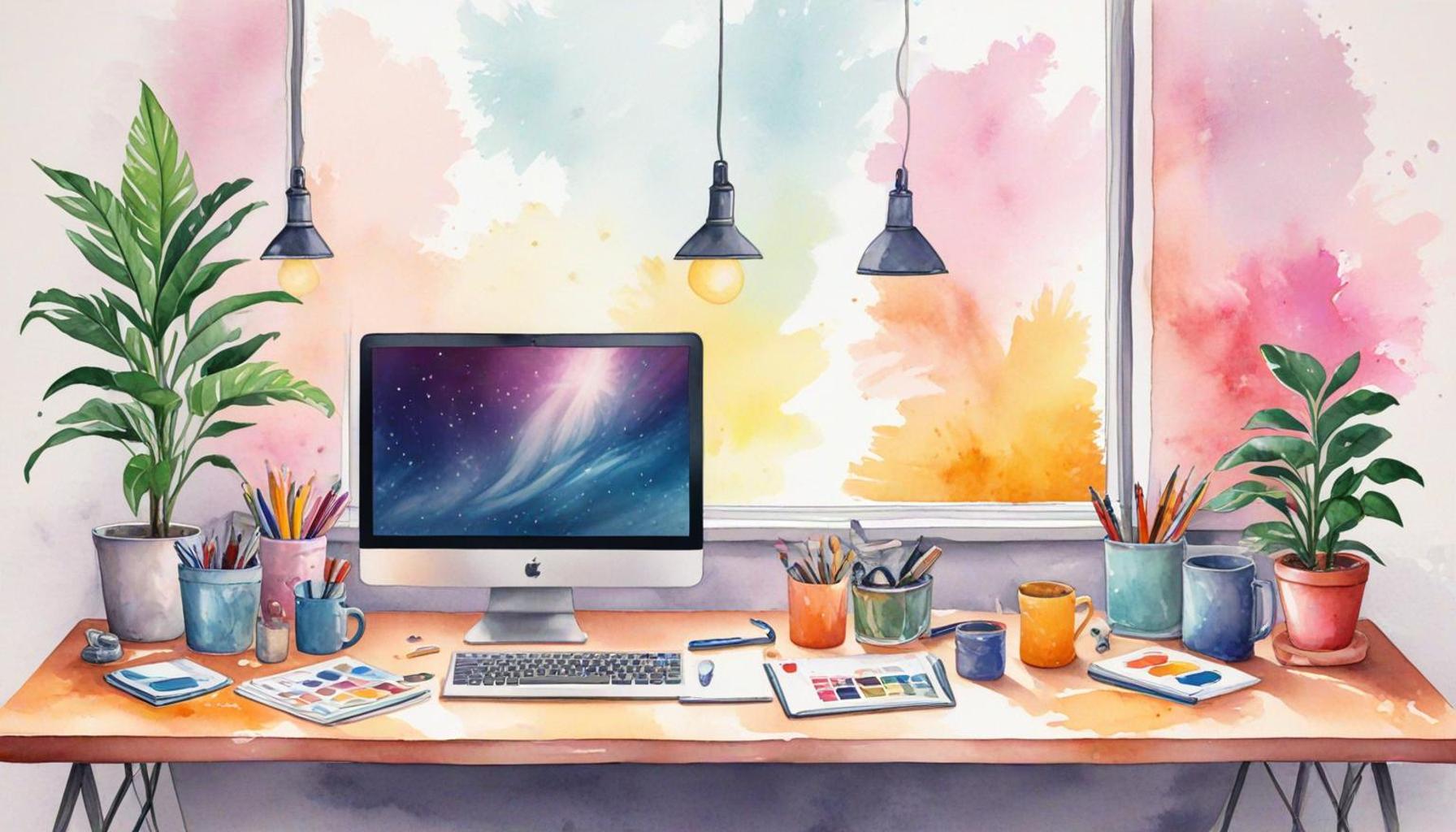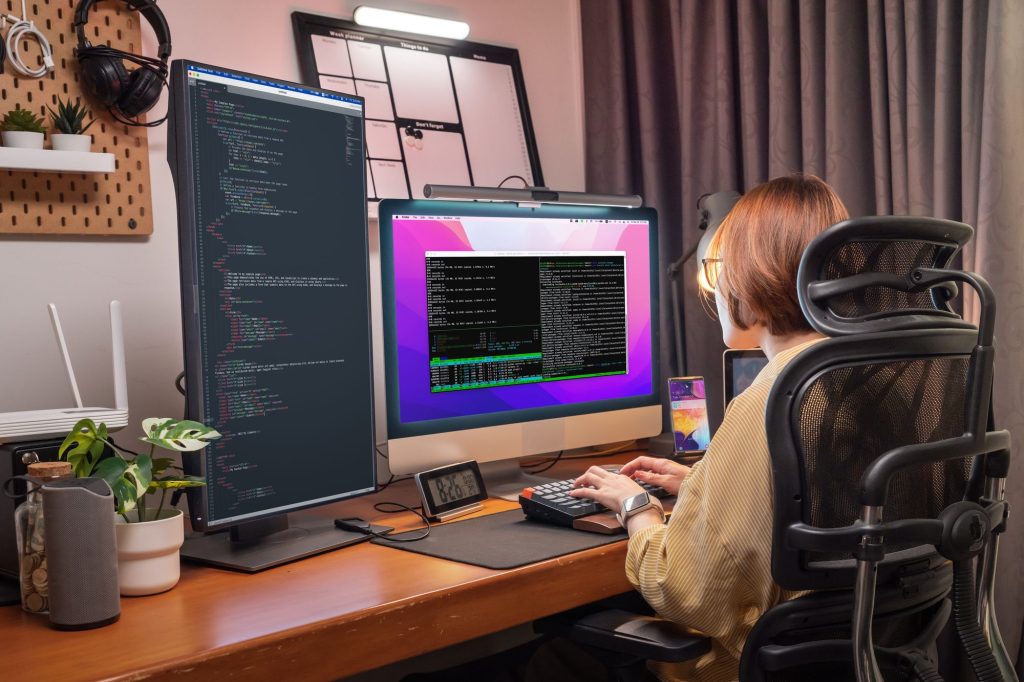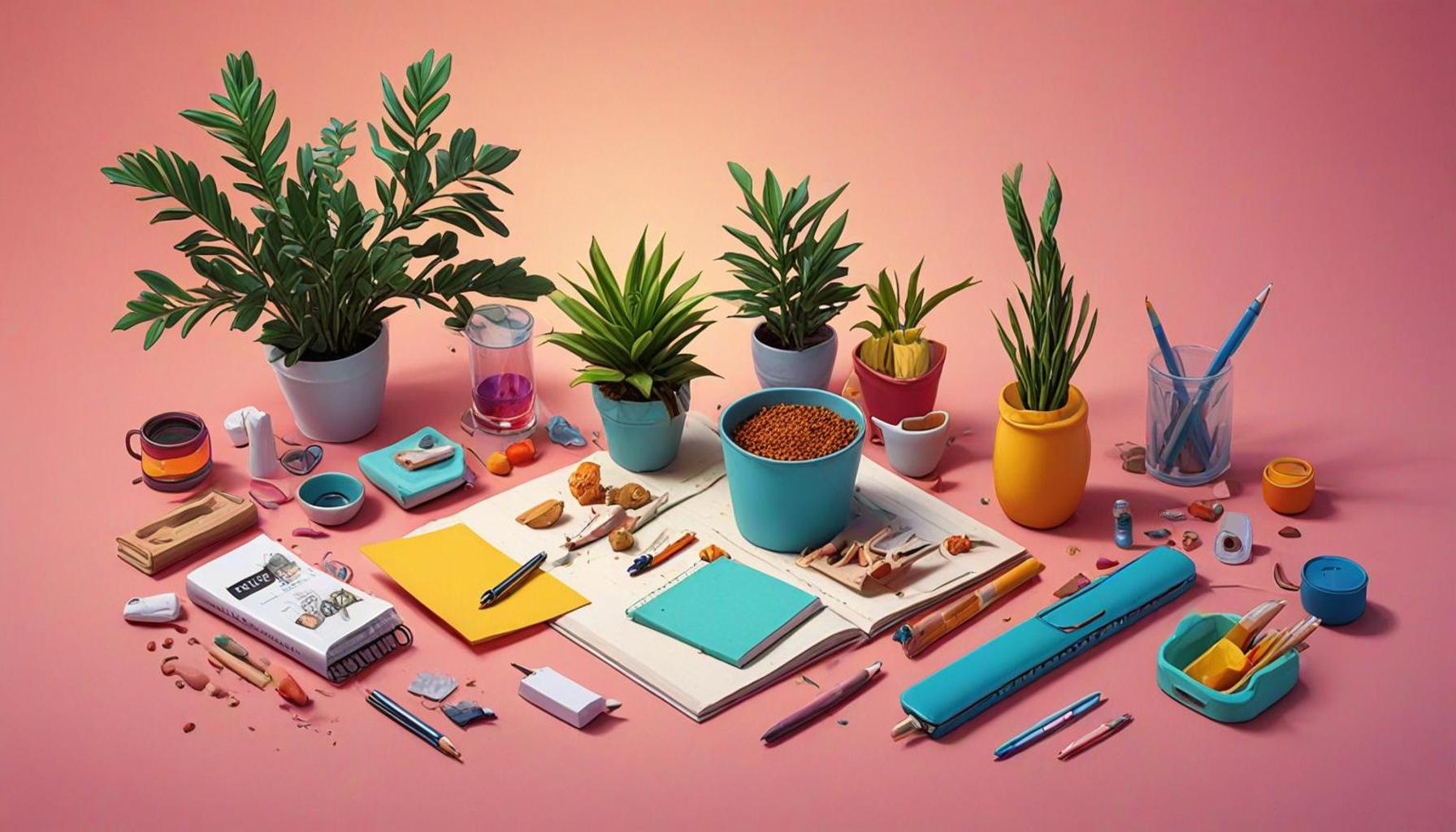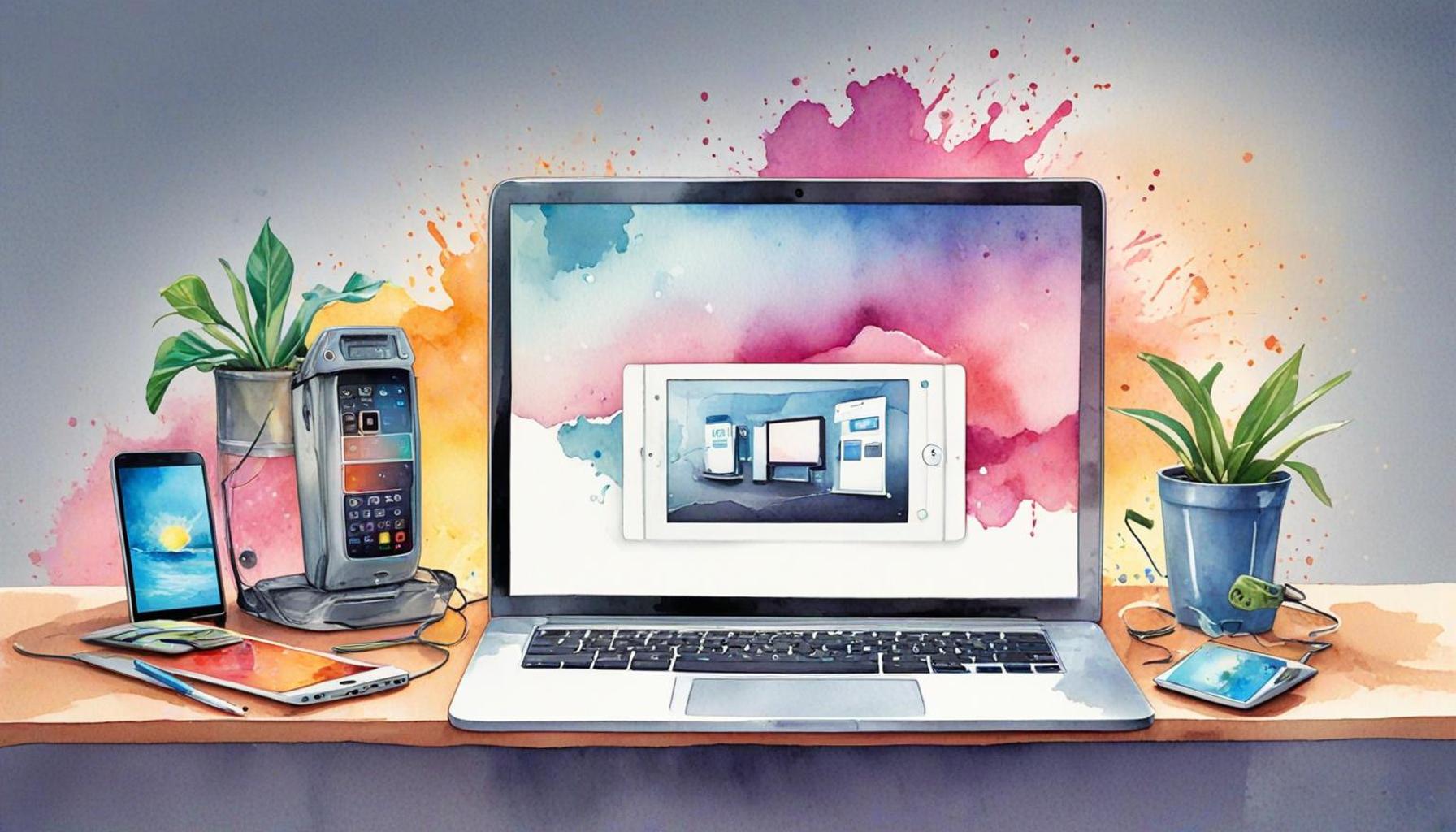How to Create a Minimalist Workspace to Increase Productivity

Understanding the Essence of Minimalism in Workspaces
As we navigate through a world saturated with distractions, clutter can significantly impair our focus and overall performance. A well-designed minimalist workspace is not just aesthetically pleasing; it fosters an atmosphere of clarity and efficiency, ultimately nurturing creativity and productivity. In a landscape where multitasking often reigns, a minimalist approach allows individuals to hone in on their tasks without the usual interruptions.
So, what does establishing a minimalist workspace look like? Let’s delve into some essential components:
- Essential tools only: Start by evaluating what you truly need. Limit the items on your desk to just the essentials such as your computer, a notepad, and a few writing instruments. This intentional selection not only creates a cleaner work surface but also encourages you to focus on executing your tasks effectively.
- Simplified decor: Choose a select few decorative items that resonate with you personally or serve as a source of inspiration. For example, a single piece of art, a small plant, or a meaningful quote can elevate the ambiance of your workspace without overwhelming it.
- Neutral color palette: The colors in your environment greatly influence your mood and productivity levels. Opt for a calm, neutral palette—think soft whites, light grays, or muted earth tones—that promotes focus and reduces visual distractions.
Research consistently reinforces that maintaining a clean and organized workspace can lead to heightened concentration and improved mental clarity. A pivotal study published in the Journal of Environmental Psychology found that individuals in tidy spaces reported higher levels of productivity and lower stress levels. By adopting a minimalist approach, you can effectively combat decision fatigue, surrendering the battle against endless distractions, and refocus your mental energy on strategic objectives.
As you immerse yourself in the principles of minimalism, you will discover how to cultivate a workspace that not only resonates with simplicity but also enhances your productivity. For instance, tech companies like Google have embraced minimalist elements in their workplace design, opting for open spaces that encourage collaboration while still providing personal workstations that reduce clutter. Ultimately, optimizing your work environment is more than a mere aesthetic choice; it is a strategic move toward achieving your personal and professional goals, maximizing your potential in a world that constantly demands more from you.
DISCOVER MORE: Click here for valuable tips

Key Strategies for Designing Your Minimalist Workspace
Creating a minimalist workspace involves more than just removing clutter; it requires a thoughtful approach to how you structure your environment, prioritizing functionality over excess. To begin your transformation, consider the following strategies that can significantly enhance your productivity:
- Maximize Natural Light: Studies have shown that natural light improves mood and energy levels, which can directly impact productivity. Position your workspace near windows or opt for transparent dividers that allow light to stream in. If working from a dedicated room isn’t possible, consider portable workstations that can be moved to sunnier spots throughout the day.
- Ergonomic Considerations: A minimalist workspace should focus on comfort and usability. Invest in ergonomic chairs, standing desks, or even adjustable monitor stands. These tools help reduce physical strain, allowing you to work efficiently for longer periods. The well-being of your body enhances mental clarity, making comfort a crucial element in this design philosophy.
- Dedicated Zones: Sometimes referred to as “work zones,” segmenting your workspace into different areas for specific tasks can help maintain focus. For instance, you could designate one area solely for computer work, another for brainstorming, and a small nook for taking breaks. By associating each zone with different activities, you condition your mind to enter a focused state as you transition between tasks.
Moreover, maintaining a minimalist workspace goes hand in hand with optimal technology use. In this digital age, the tools we deploy can either clutter our environment or streamline our tasks. Consider whether apps and tools are actually serving a purpose rather than just contributing to digital clutter. A recent survey indicated that professionals who adopted fewer tools and focused on essential software reported a staggering 40% increase in productivity compared to their more digitally burdened counterparts. This aligns with the minimalist philosophy of letting go of the unnecessary.
The journey toward a minimalist workspace is also about establishing routines that complement the environment you’ve created. Schedule regular decluttering sessions where you evaluate what stays and what goes. This will not only sustain the minimalism of your workspace but will also create a habit of intentionality in your work life. By prioritizing only the things that enrich your workspace, you promote a culture of mindfulness that extends beyond your desk.
Incorporating these strategies into your workspace design doesn’t just create an aesthetically minimal environment; it cultivates a mindset geared toward productivity. As you implement these techniques, you’ll likely find that a clearer, more intentional workspace leads to improved focus and creativity, ultimately propelling you toward achieving your personal and professional goals with greater efficiency.
The concept of a minimalist workspace is not just a trend; it is a transformative approach that has the potential to significantly boost productivity. By adopting simple principles, individuals can create an environment that fosters creativity and efficiency. This goes beyond mere aesthetic appeal and delves into the psychological benefits of a clutter-free zone.
One of the key elements of a minimalist workspace is organization. Keeping only essential items on your desk can help reduce distractions. Consider incorporating multi-functional furniture; for instance, a desk with built-in storage can eliminate the need for multiple storage units, keeping your space streamlined. Additionally, implementing a color palette that is soothing and neutral can enhance concentration and reduce stress levels.
Lighting also plays a crucial role. Prioritizing natural light can improve mood and energy levels while artificial lights should be soft and adjustable. Utilizing desk lamps with warm bulbs can create a cozy atmosphere conducive to productivity.
Moreover, technology integration can aid in maintaining a minimalist approach. Use apps for task management rather than sticky notes or paper planners. Digital tools can help keep your workload organized and your workspace clear.
Incorporating green elements, like plants, not only adds a touch of nature to your workspace but also purifies the air, contributing to a healthier environment. In fact, studies have shown that adding plants to a workspace can increase productivity by up to 15%.
Ultimately, creating a minimalist workspace requires introspection and understanding of your personal work habits. Every individual’s needs are different, and customizing your environment to suit your workflow is essential in maximizing efficiency and productivity.
| Category | Benefits |
|---|---|
| Reduction of Clutter | Improves focus and minimizes distractions. |
| Enhanced Creativity | Fostered by a calm and organized environment. |
Embracing minimalism in the workplace is about more than just aesthetics; it’s about creating an environment that encourages productivity. By understanding and implementing these principles, you can cultivate a workspace that not only looks good but works effectively, too.
DISCOVER MORE: Click here to optimize your living space
Integrating Simplicity and Technology
As the world becomes increasingly digital, maintaining a minimalist workspace requires a strategic approach to technology. You should aim to bring in tools that enhance productivity without adding to the chaos. Start by evaluating the software you currently use. Are they all necessary? Unsubscribing from unnecessary applications and using all-in-one solutions can simplify your digital environment. According to a study by the Harvard Business Review, professionals using fewer software tools report feeling less overwhelmed and can focus better on their tasks, resulting in a productivity boost of up to 25%.
Once you streamline your applications, consider how you interact with technology in your workspace. Use a single screen for digital distractions, and limit notifications to what absolutely requires immediate attention. Many experts suggest utilizing tools like the Pomodoro Technique, which employs focused work sessions followed by short breaks. This method not only helps distill your attention but also creates natural intervals to disconnect from screens and rejuvenate your mind—an essential aspect of a minimalist philosophy.
Choosing Minimalist Accessories for Functionality
Accessories play a pivotal role in tying your minimalist workspace together. Rather than cluttering your desk with countless items, select functional accessories that serve dual purposes. For instance, opt for a simple desk organizer made of metal or wood that can hold both your stationery and important documents. This helps maintain a clean appearance while allowing easy access to necessary tools without overwhelming your visual senses.
When it comes to decor, focus on a few select pieces that inspire you. A single plant can bring life to your workspace without making it feel cramped. A 2021 study conducted by Psychology Today found that having plants in workspaces significantly lowers stress levels and increases feelings of well-being, both of which are essential for a productive environment. Remember, the key is to choose decor that fulfills you while confidently adhering to the minimalist ideology of ‘less is more’.
Incorporating Mindfulness into Your Daily Routine
A minimalist workspace is not just about physical space; it’s about cultivating a mindset that promotes focus and clarity. Begin adopting mindfulness practices throughout your workday. Take a few moments at the start of each day to set intentions for what you want to accomplish. Techniques such as gratitude journaling or brief mindfulness meditation can help you center your thoughts, reducing anxiety and enhancing your overall productivity.
Additionally, set boundaries for your workspace. If you’re working from home, designate specific hours to separate personal life from work life. This helps in avoiding distractions that can lead to a disorganized thought process and ultimately, a cluttered workspace. As you grow accustomed to these boundaries, you’ll find that transitioning into work mode becomes smoother, which aligns with the core principles of minimalism: intentionality and purpose.
By thoughtfully integrating technology, selecting functional accessories, and embracing mindfulness, you can create a minimalist workspace that not only looks clean but actively promotes productivity in your daily life. Embrace these strategies to foster a balanced environment that embodies both simplicity and efficiency, ultimately guiding you toward greater success in your endeavors.
DIVE DEEPER: Click here to learn more about minimalism in your home
Conclusion: The Path to a Productive Minimalist Workspace
In conclusion, creating a minimalist workspace is a conscious choice that can profoundly enhance your productivity and overall well-being. By streamlining both your physical and digital environments, you pave the way for clearer thinking and increased focus. The journey begins with evaluating your tools and accessories, ensuring that each item serves a specific purpose without contributing to clutter. As studies affirm, such as the one from Harvard Business Review, fewer distractions lead to about a 25% increase in productivity.
Moreover, integrating elements of mindfulness into your daily routine can cultivate a more intentional approach to work. With practices that focus on setting daily intentions and establishing boundaries around your workspace, you can foster a mental landscape conducive to creativity and efficiency. Remember, simplicity is more than just minimalism in design; it’s about creating an environment infused with purpose and clarity.
As you adopt these principles, consider how your workspace not only reflects your professional aspirations but also your personal philosophy. A minimalist workspace is not merely a trend, but a robust strategy for enhancing focus in a distracted world. Start your transformation today and watch as a clear, well-defined workspace empowers you to reach your goals with renewed vigor and clarity.


